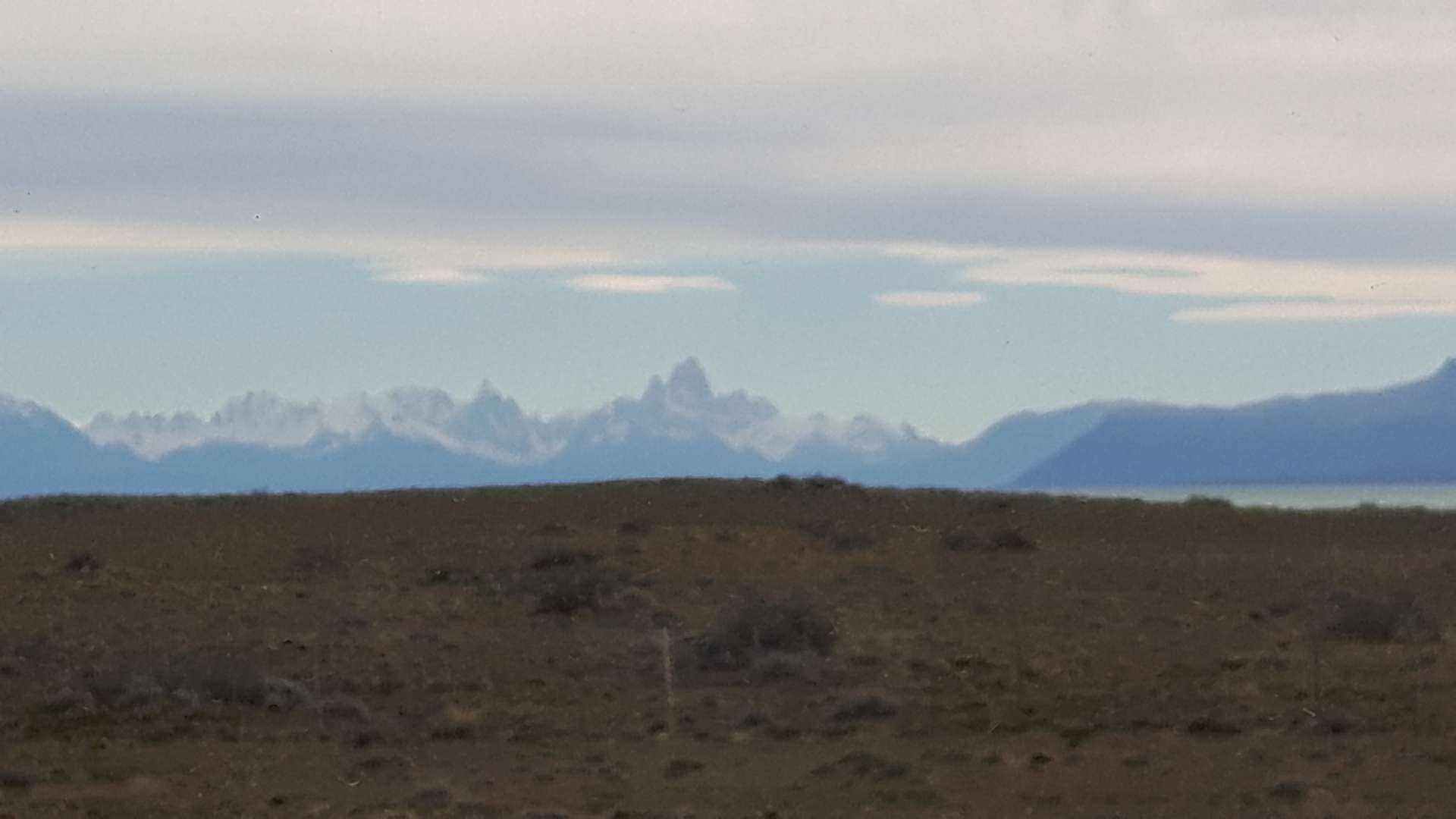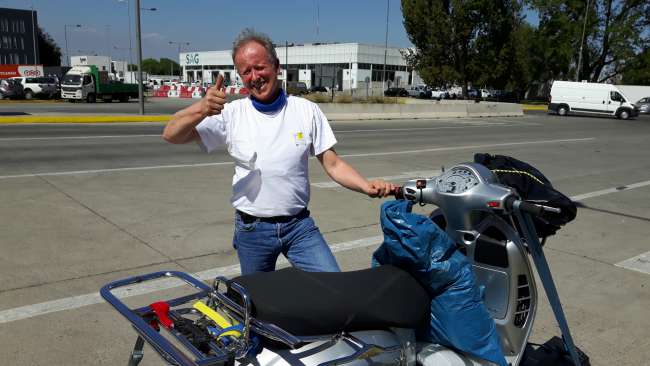from 15.05.: Iquique & Salpeter
Опубликовано: 19.05.2017
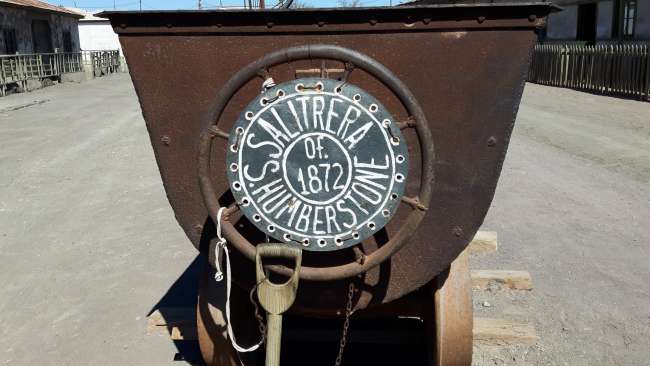
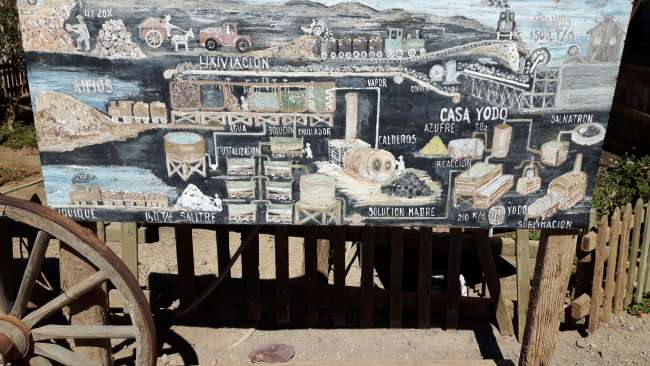
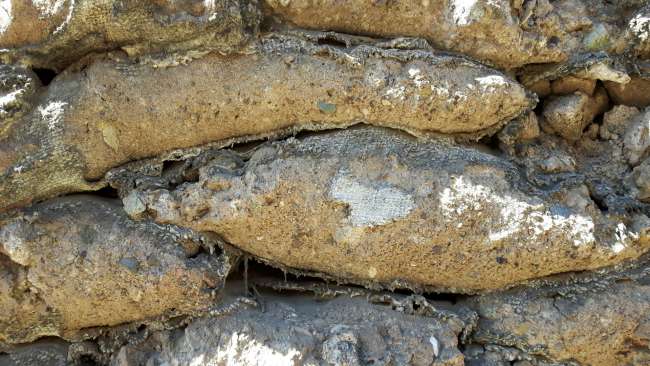
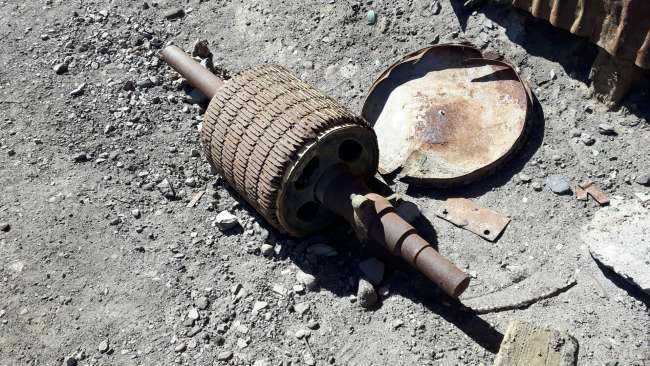
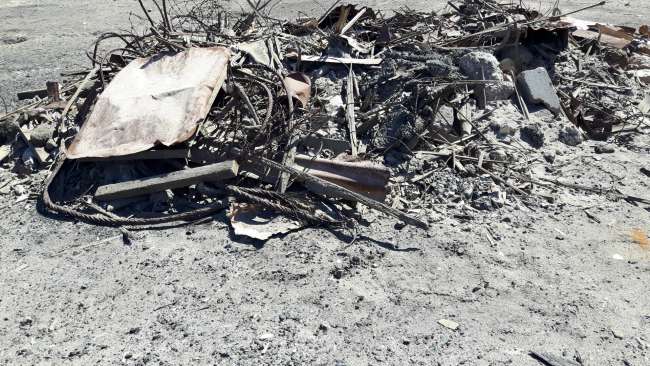
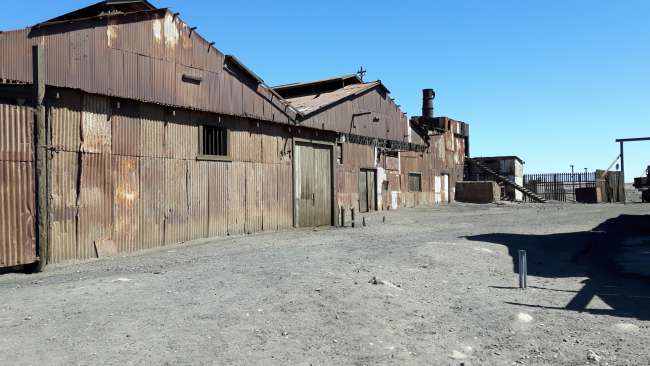
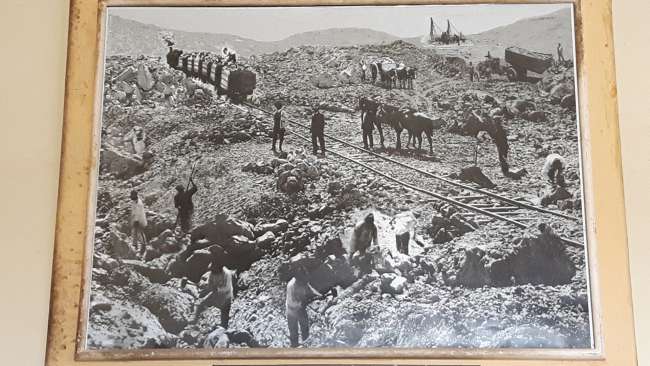
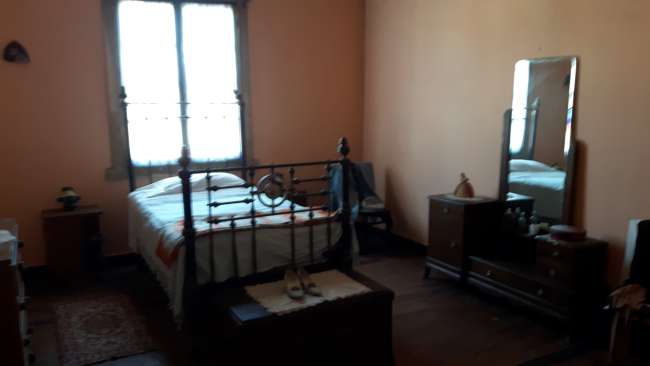
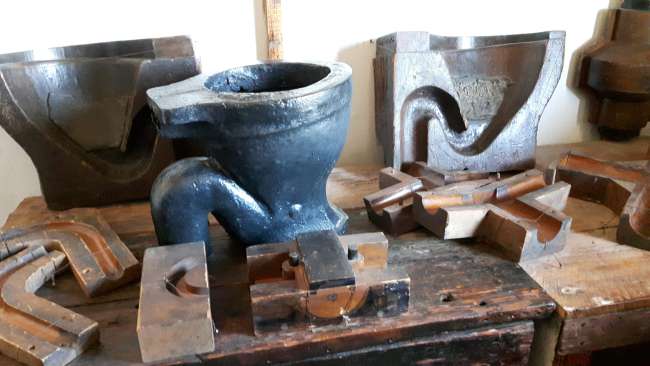
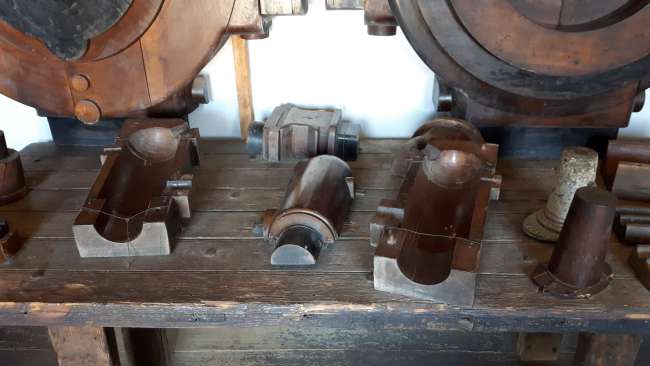
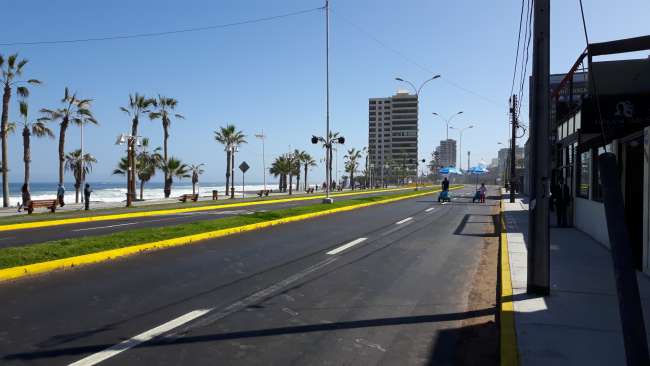
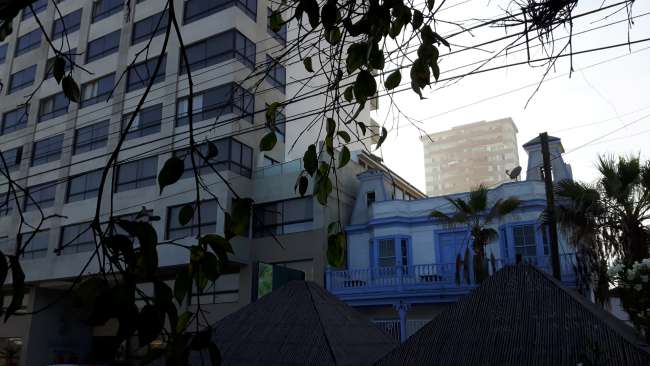
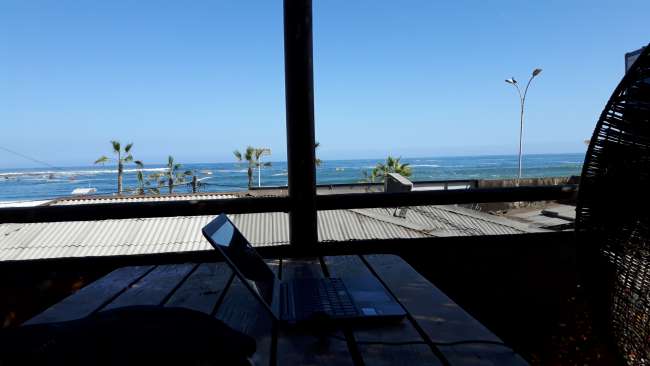
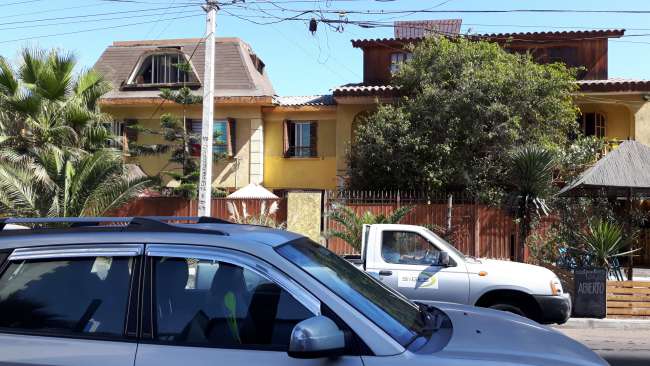
Подписаться на новостную рассылку
15.05.
The night is a good night compared to the altitude of 2,200 to 2,600 meters. Normal breathing is possible again.
Breakfast on my balcony terrace, overlooking the harbor and the hustle and bustle on the street. Suddenly, I pause:
a black cloud, which seems never-ending, moves about 20 cm above the Pacific. A lively cloud - I suspect hundreds of geese flying over the bay in search of food. This giant swarm reminds me of the flocks of starlings in the vineyards, shooting like a black cloud into the vineyards to feast on the grapes.
Before I leave, I have to replace the water with coolant. After several attempts, I finally find a workshop with an attached store that sells me a canister. Drain the water, refill, pack the scooter, and head north. It's cloudy here, but not hot yet. The Vespa runs like in old times, accelerating like new, Route 1 is empty, the trucks seem to have come from the mountains - now there is no one left to see, the milky blue-gray Pacific to my left, good road, wind at my back, and a Vespa that wants to have fun. 90, 100, 110, almost 120 km/h. A winding road leading into the mountains, carved into the slopes, offering a great view down to the bay and the powerful surf. The mountains, with their first two-thirds covered in sand from the beach, provide a special motif.
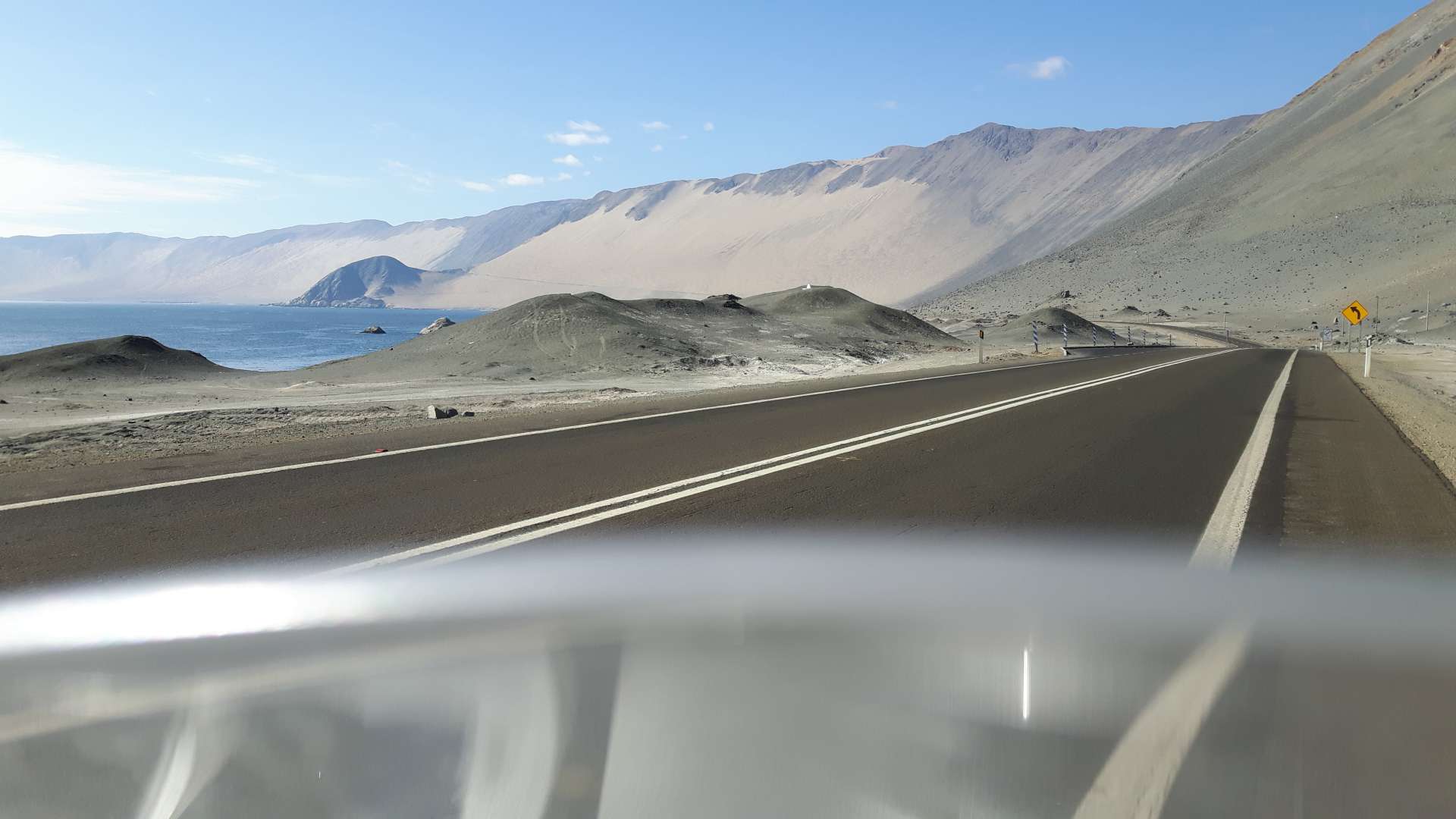
The sand from the beach is blown onto the mountains and almost completely covers them here
In fact, I manage the 210 km to Iquique and arrive when the sun is still high over the Pacific.
This was a really nice and relaxing tour for a long time.
Iquique appears elegant and rich. A four-lane road along the coast, tall and green palm trees in the middle, the green strip mowed lush green, high-rise buildings dominate the skyline and cityscape, there is nothing left of the originally typical South American flair - like yesterday in Tocopilla.

The four-lane avenue is closed because the anniversary parades will take place here
Every time I enter a new city, I ask myself: do I want to stay here or continue tomorrow? In the past, I almost always stayed for two nights, with a few exceptions.
Iquique lives off the thriving harbor business (ore and fish processing) and had the second-largest silver mine after Potosi in central Bolivia. Due to the Saltpeter War, it no longer belongs to Peru but to Chile. There is hardly any rain here, artificial irrigation systems are mentioned - but still - as it is advertised - it is a city of eternal spring. There is no sign of autumn here.
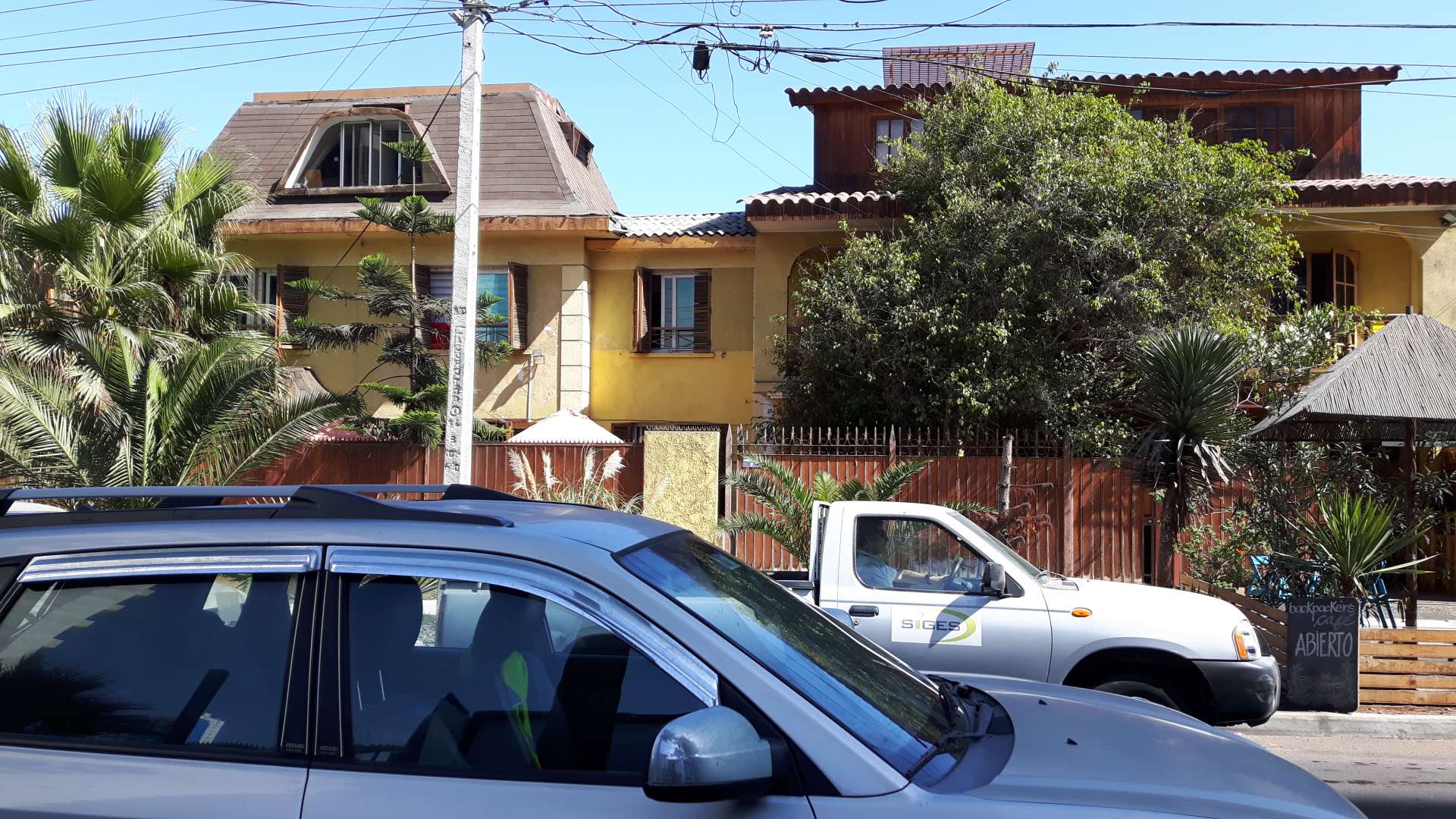
a nice hostel - just a few minutes to the beach
The first two hostels want fantasy prices and do not have a shelter for the Vespa, the third one only wants 8,500
clp in a four-bed room and has space for the Vespa. I am greeted by a man from Mannheim who is exploring South America with his BMW. Then I meet someone from San Pedro, who has been skateboarding from San Pedro until now. The coastal road that I also drove. At 90 km/h! Uphill, he is hitchhiking. Amazing. He has a video camera mounted on his helmet, and I can see how he took the descents and even overtook a mega truck.
Nice atmosphere, dominated by English again, but I can tolerate that for another day. Tomorrow I will explore the surroundings, cook something healthy again, and plan further travels.
16.05.
who embarks on a journey...
or in the words of Brecht: just make a plan...
the clouds from the Pacific are still hanging over the city., I read about Iquique and the Saltpeter War and the saltpeter villages located in the mountains, which have been abandoned since the 1960s. Saltpeter was a similar boom for Chile as rubber was for Brazil and especially for Manaus when it didn't know where to put all the money. In both cases, resourceful minds developed a synthetic substitute product, bringing the money flow to a halt in both Chile and Brazil. A terrible fate for the affected people who became unemployed and moved to the cities.
I want to go there and see for myself. And my good experiences from yesterday make me somewhat euphoric. Going east means working my way up to 1,000 meters in the mountains again and experiencing desert wind. Dieter, the BMW driver from Mannheim, comes down, and I propose to him to drive together there.
The Vespa climbs the mountains like crazy, with Dieter following on his BMW since I am slower and have the navigation system turned on.
And then, at the top of the hill, the familiar stuttering starts again, and it suddenly drops back to 40 km/h. Now I am convinced it can't be the nozzles, it must be another cause. We check the nozzle and the fuel filter, see if it's getting enough air, and if the air filter is clogged. We can exclude all of that, and then I remember Jose's makeshift solution. Because the first workshop, which lost an important part for the carburetor, Jose built a replacement, which - in my theory, can be the only reason for the stuttering and not wanting to take the gas.
We let ourselves roll back into the city and have an impressive view of the hazy bay, the crashing waves, and the high-rises, which slowly but surely drive out the small two-story colorful Chilean wooden houses and squeeze in between.

several examples of this type of urban development
When there are urban planners and building offices here, which need to grant permits, they are all corrupt!
Arriving at the hostel, we find helpful support from Caroline, the girlfriend of our hostel owner, who knows a mechanic. We drive there - at first, he is dismissive and discourages me, but then he says he wants to have lunch now and we should come back around 5:00 pm.
So I have an hour of beach life, observing the surfers who use the impressive waves as a toboggan run.
At 6:00 pm, we are at Beto's - that's the mechanic's name - he shows me a cut-off spring from my carburetor and the aluminum part built by Jose, the aluminum part that has changed its shape due to use, which he has replaced. He installed a longer spring instead of the shortened one. Result: the Vespa runs better than ever. Beto's initial reluctance has disappeared. His neighbor Cecilia is his secret crush, and he has surely come up with many ideas in the past to win her over. He knows she is learning German, and now comes the moment:
He sets up his smartphone for video recording, and I should say something in German to her. I gladly do so and praise Beto for his great Vespa repair. He beams. We are about to leave when he asks me again. I take off my helmet again. Cecilia loves turtles, and I should say something about turtles while he films the Vespa, the license plate with the 'D' symbol, and then me again.
Tomorrow evening, we will meet him here and toast to the successful repair with him and Caroline, who introduced me to him.
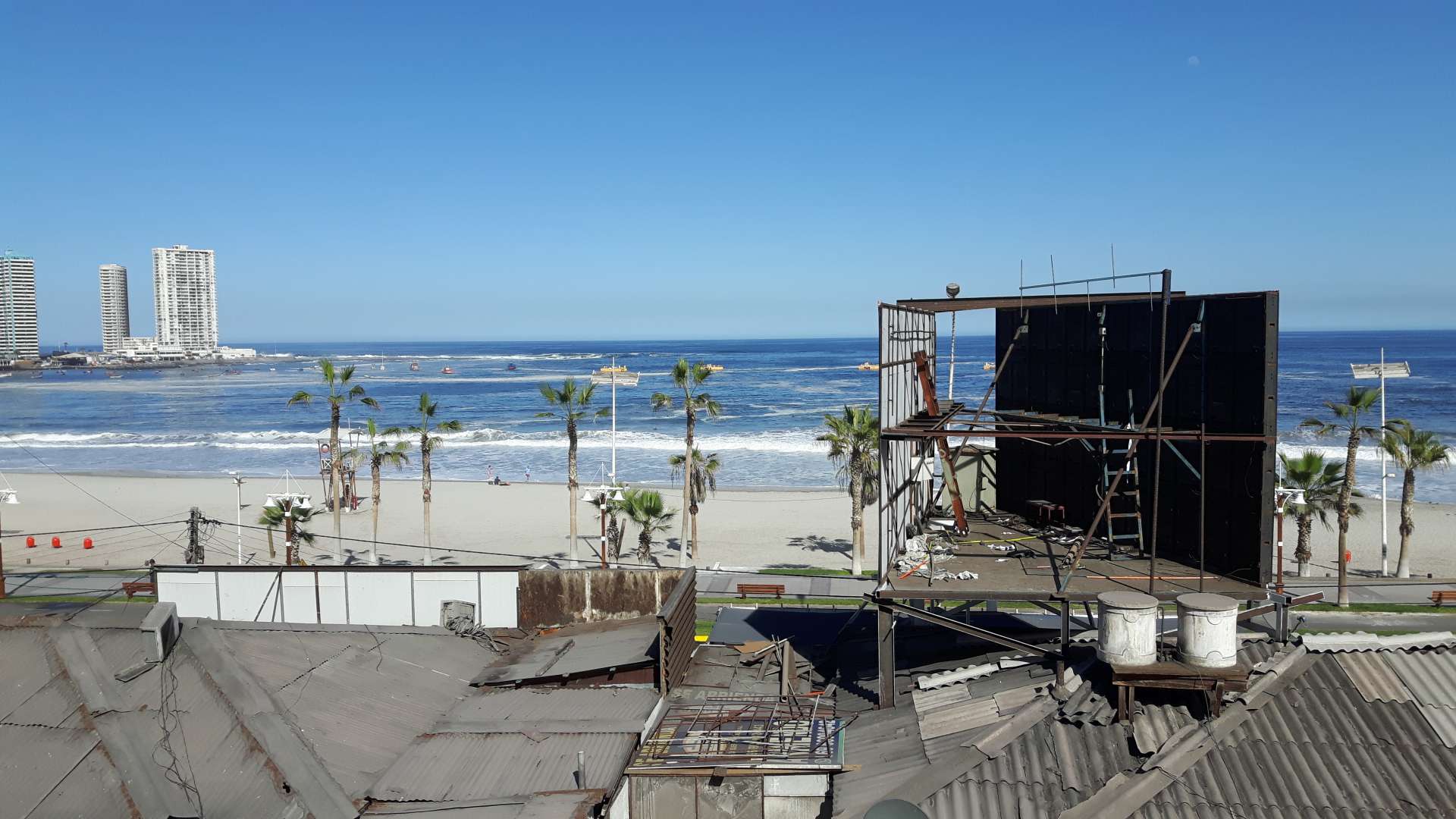
View from the roof of our hostel. Preferred location with a sea view...
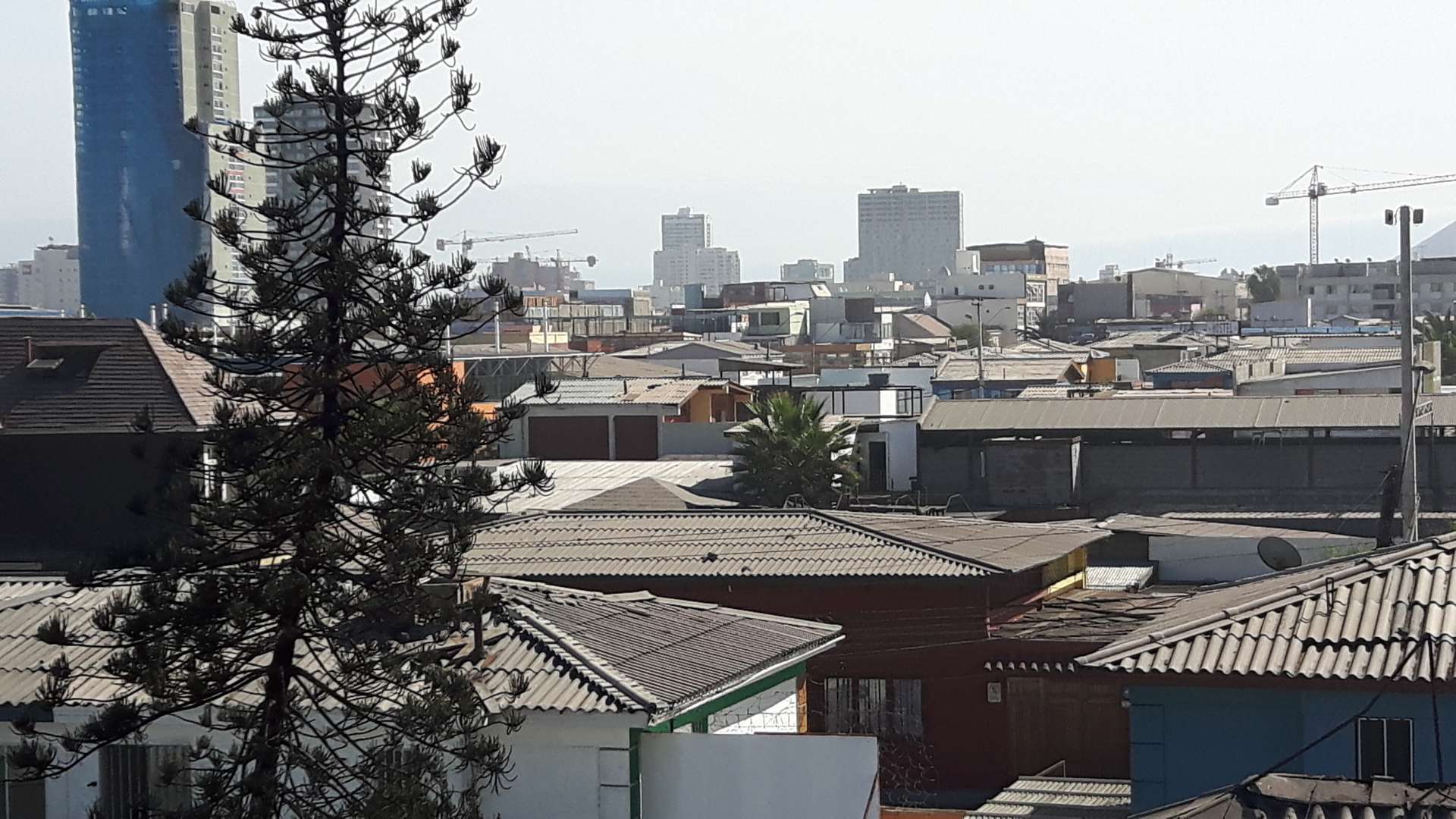
everything looks peaceful and typically South American idyllic here: but danger is approaching from behind. The high-rises are coming with power, and in 10 years, the idyll will be over
Nevertheless, in the afternoon, when it is already 10:00 pm in Germany, I sent a voice message to Wilfried with a book illustration of the carburetor and asked him to order the necessary parts. 13,000 km is nothing, and I received his response immediately. He is sitting by the river Hamme in the evening and enjoying the twilight.
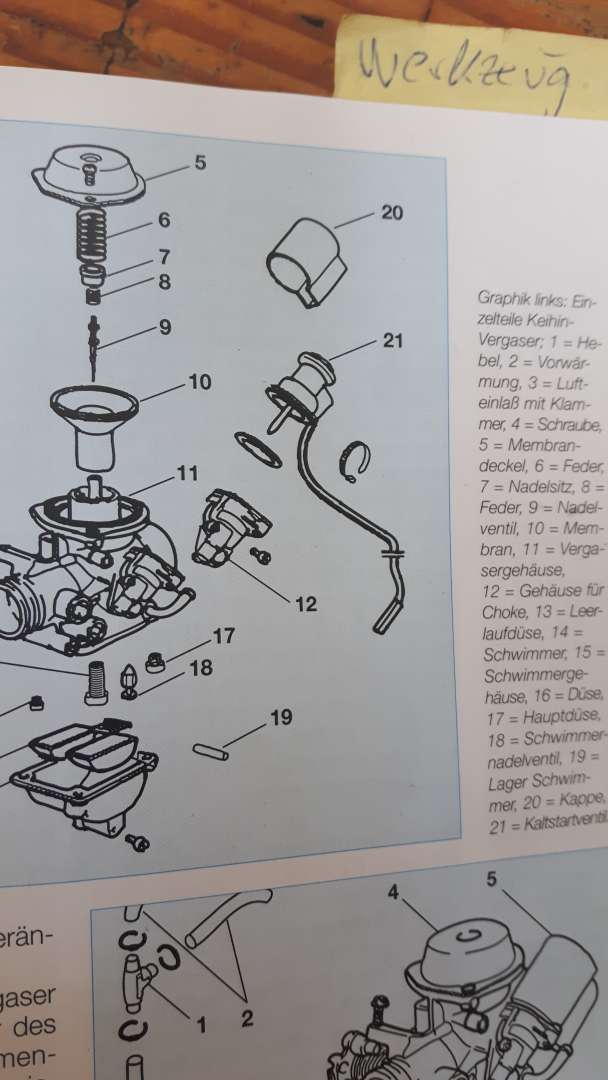
When the parts arrive, they will be sent to Arica by DHL. That way, I will have them as a replacement if necessary.
Tomorrow, we will make the second attempt to drive to the saltpeter village.
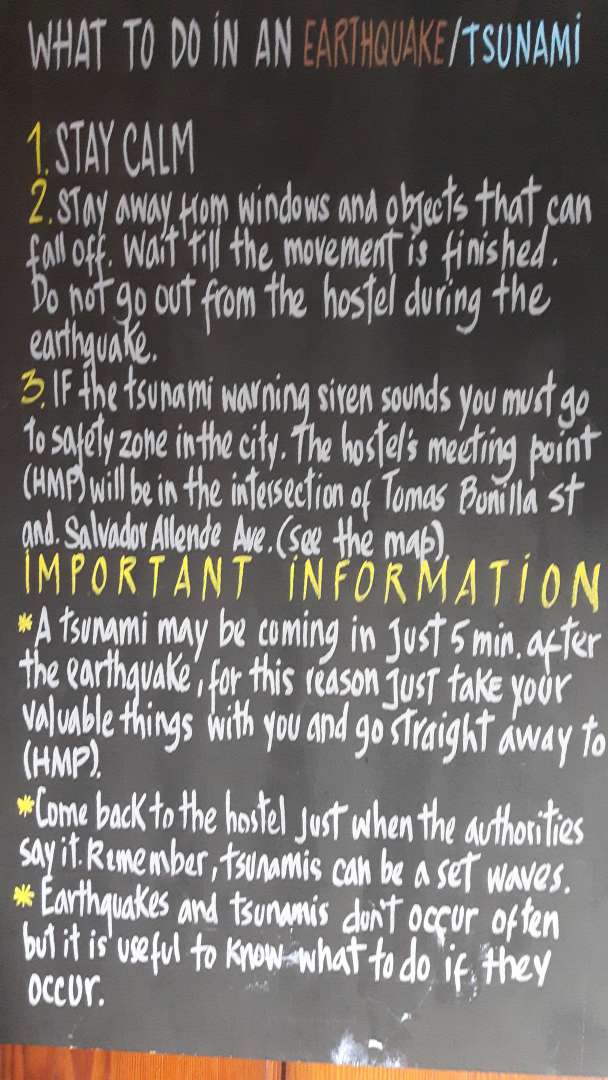
Rules of conduct during a tsunami and earthquake are very important for our hostel and are displayed at the reception
17.05.
Dieter has extended his stay by one night. Today we want to go to S.Humbertonstone to visit the abandoned saltpeter plant.
Saltpeter was a valuable export for Chile for almost 100 years, fueling Chile's economy and bringing wealth to port cities, but also unleashing wars between Chile, Peru, and Bolivia.
We ascend from sea level to 1,000 meters. No stuttering, no choking. The long inclines, which offer us a great view of the Pacific, don't bother her anymore. I overtake slow trucks and buses, which then catch up with me on flat stretches. The ride is very beautiful. We take a break, enjoy the scenery and nicotine, and after half an hour, we are there.
There is no sign of beautiful desert landscape here. The saltpeter giant raged here, and who knows what it would look like now if resourceful scientists hadn't put an end to the exploitation 100 years later. But everything has two sides. People had jobs - under what conditions - you can certainly read about it in novels or treatises. What is known is that at the beginning of the 20th century, there were uprisings of miners here that were brutally suppressed by the military and police.
In addition to the industrial plants that were built here out of nothing and operated autonomously in this remote area, mining and extracting saltpeter, a small town has emerged with worker houses, workshops, a large school, a sports field, and not to forget the patron's residence, which can also be visited.
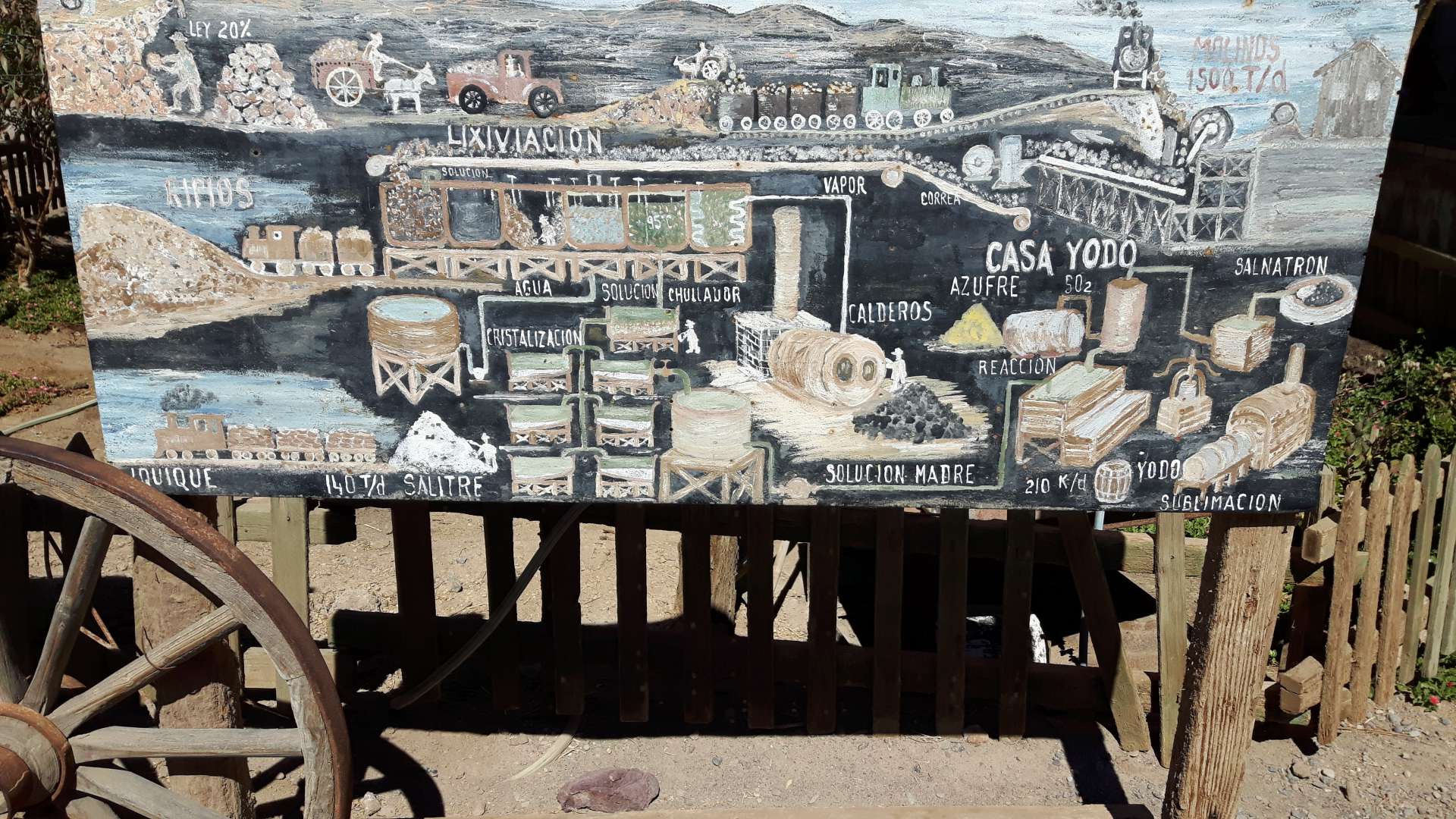
The production line: from extraction to transport to the ports
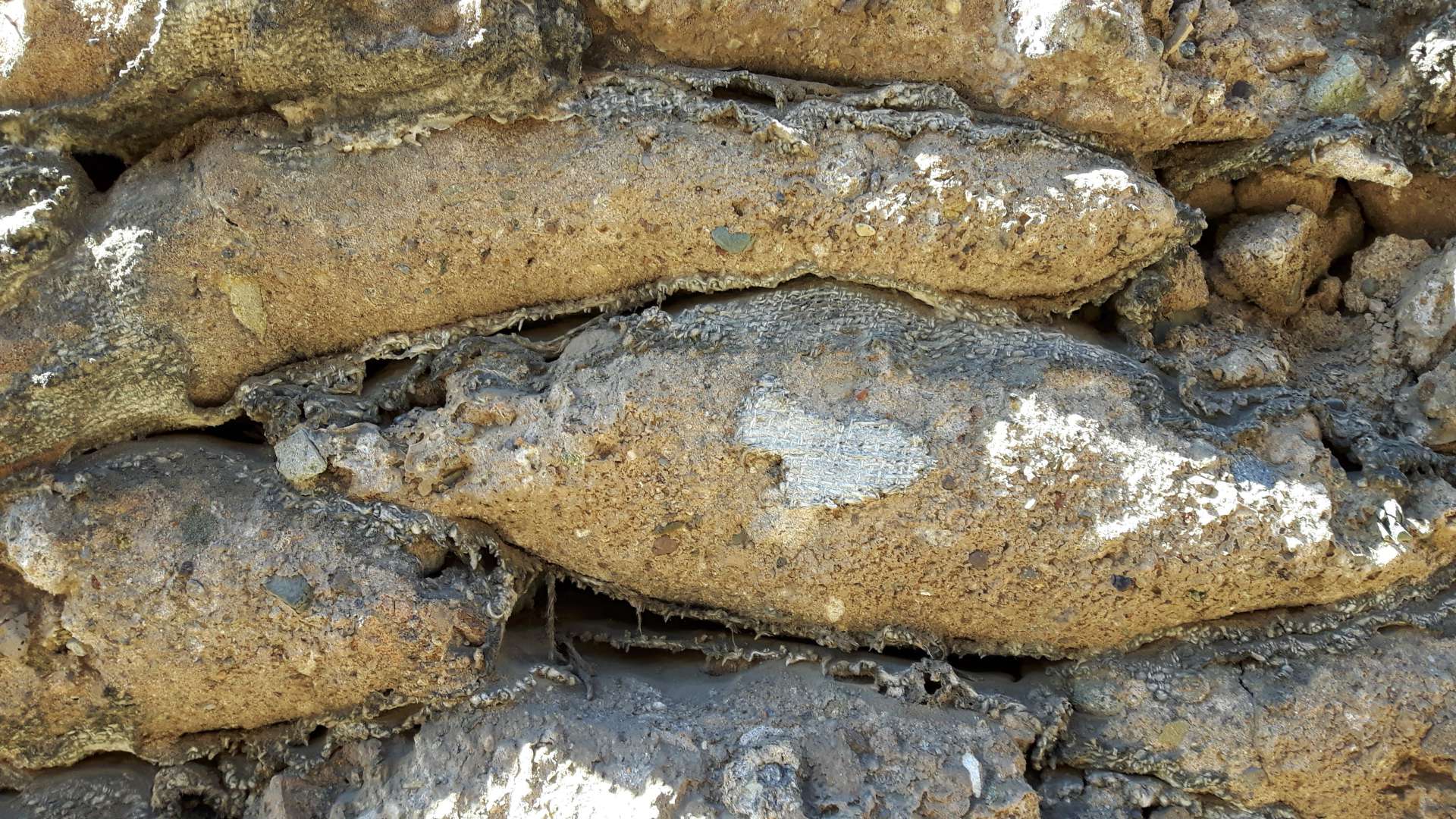


leveling it with the ground
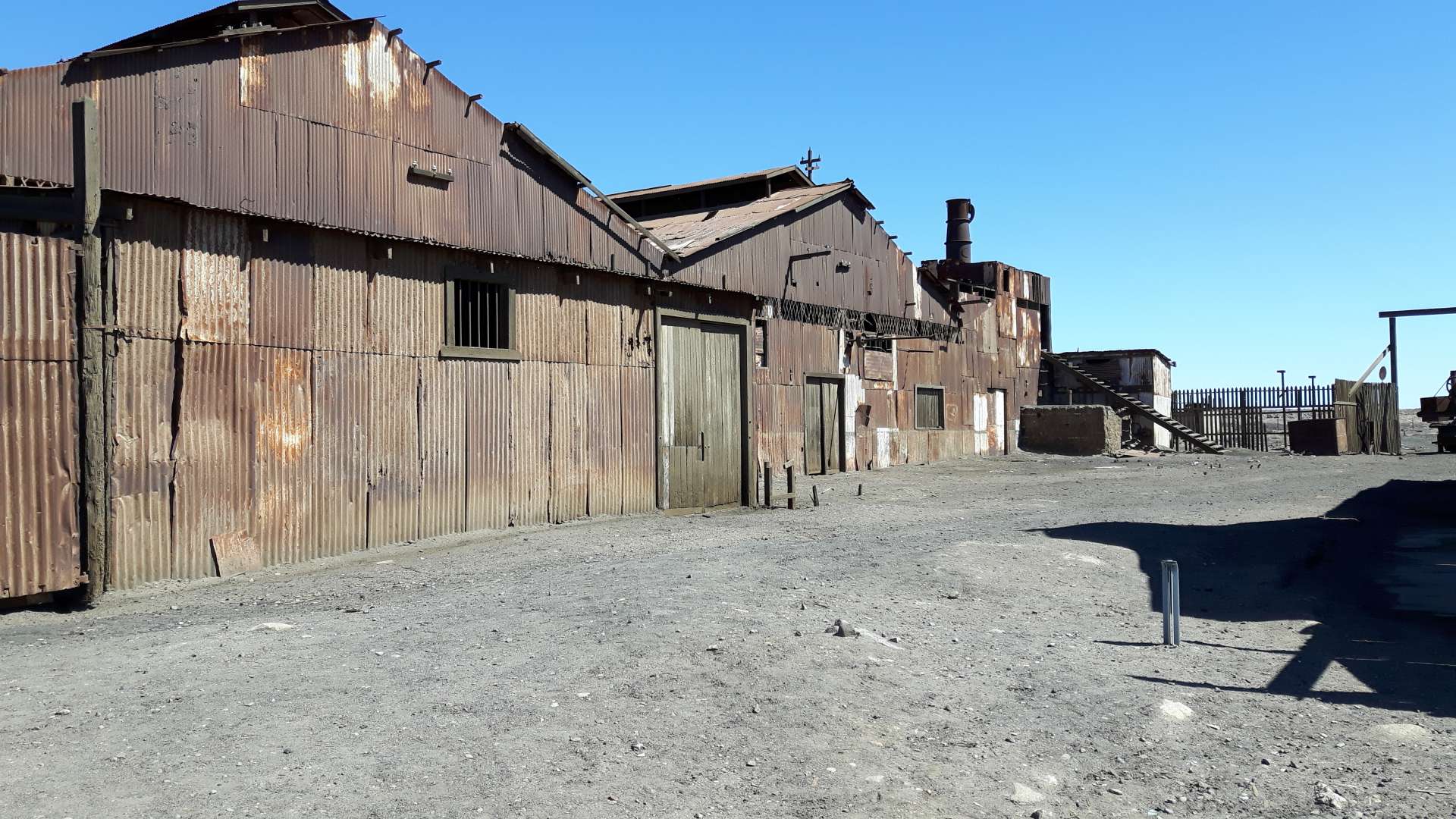
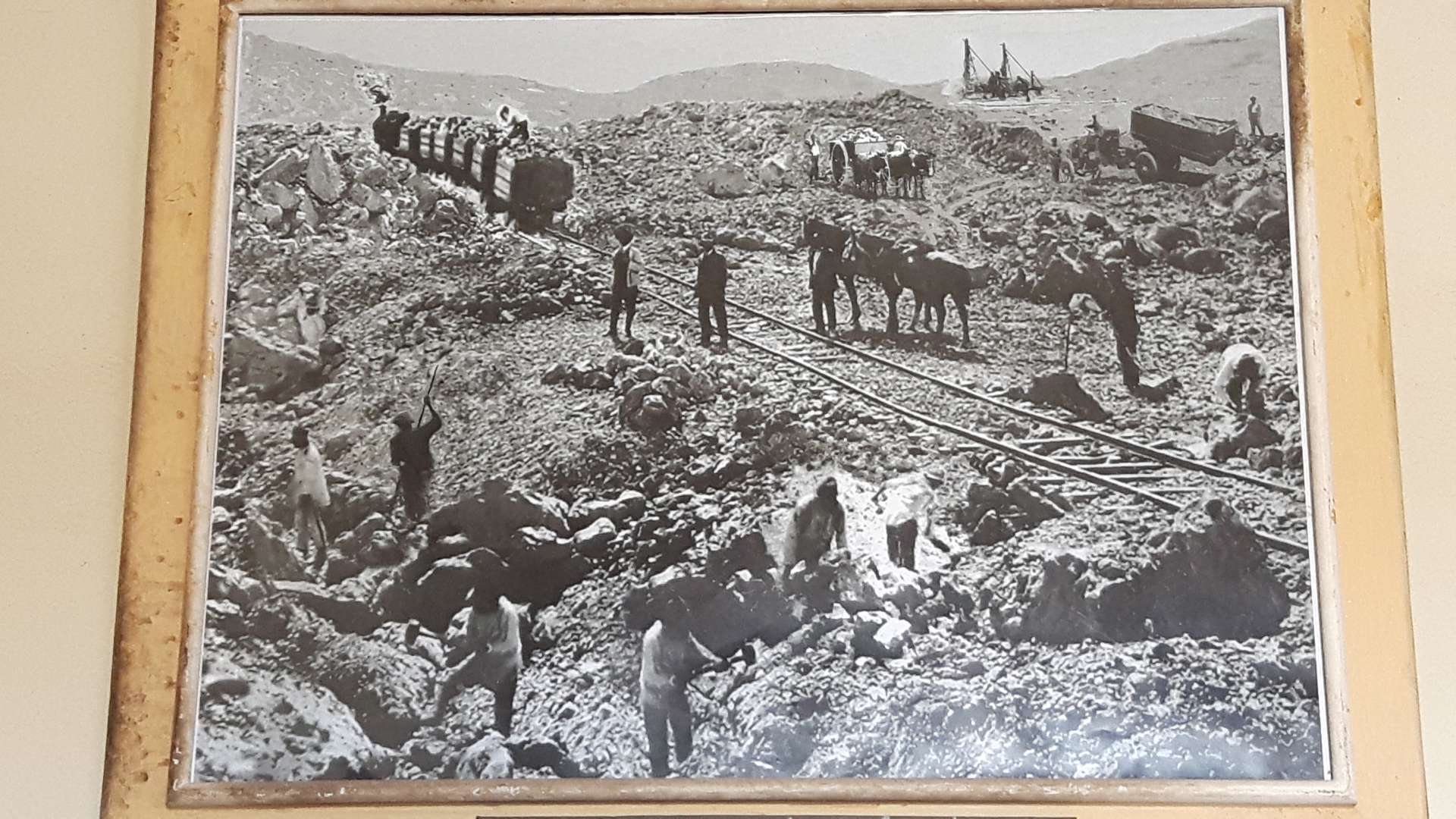

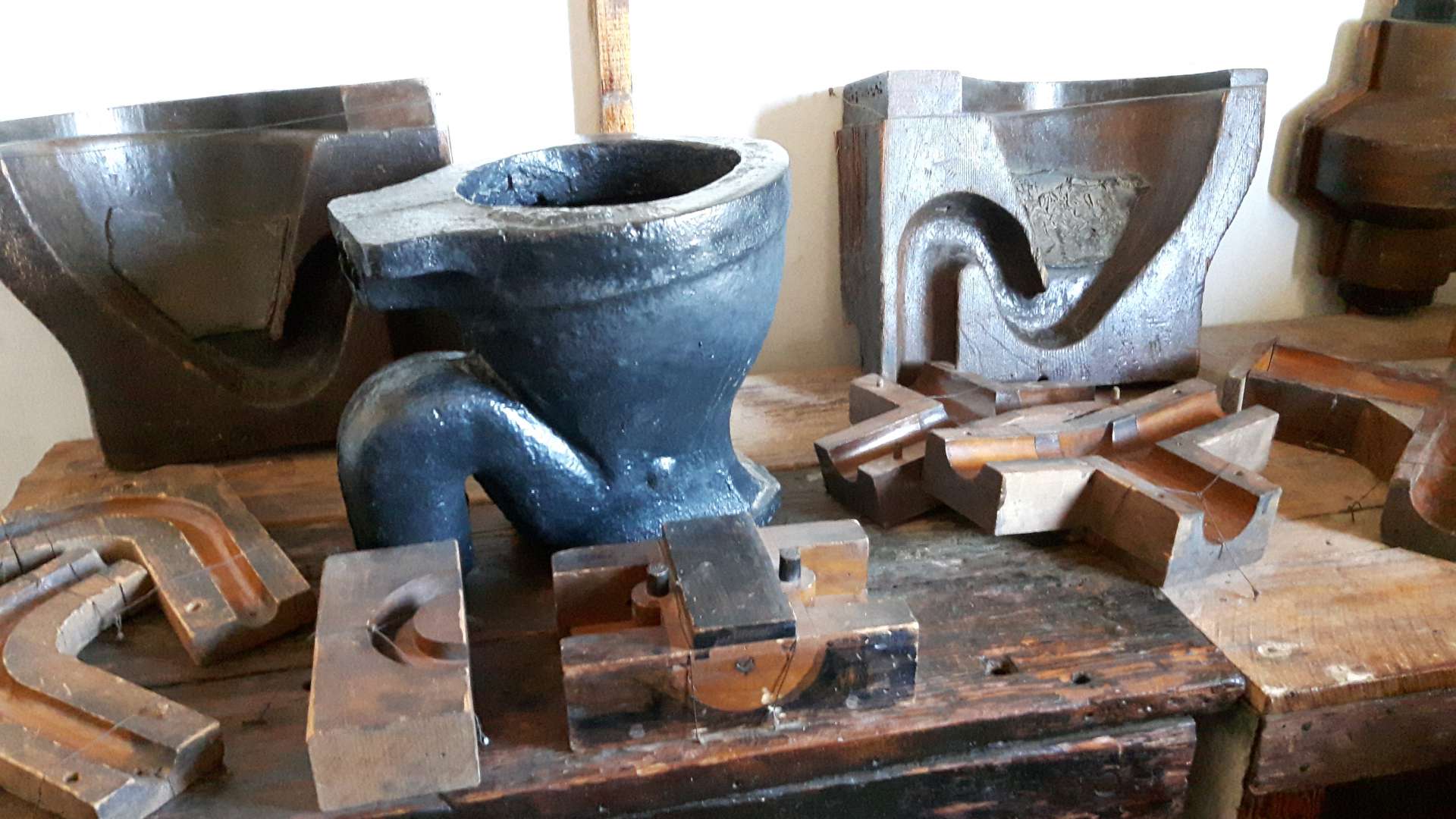
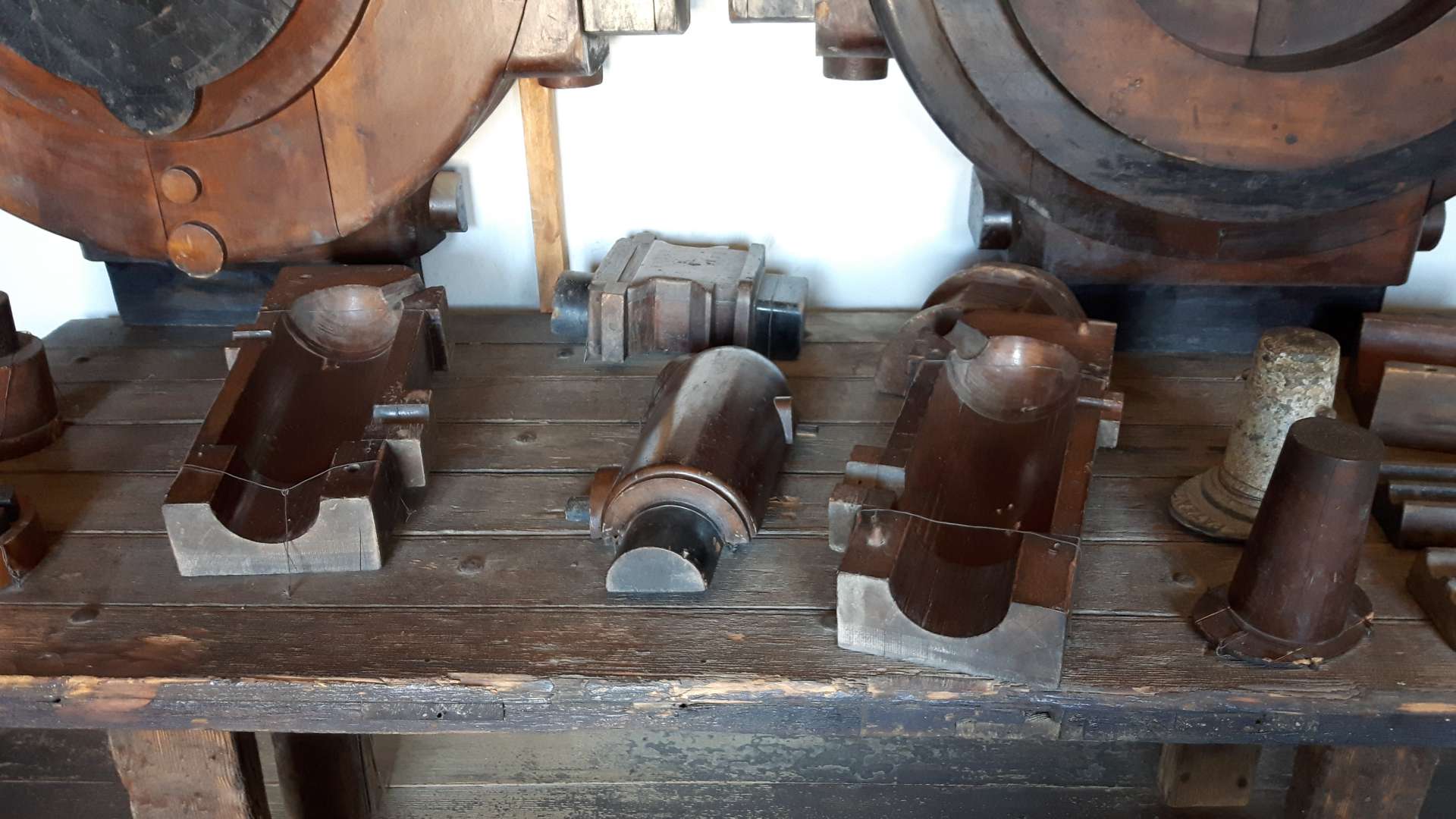
Today, the visitor is greeted by a ghost town, rusty corrugated iron halls, chimneys, and lots of metal scrap, disused gears, decay, and desolation, which is intensified by the hot and merciless desert sun. Nevertheless, it is worth a visit, preferably with your own vehicle, as walking through this facility takes more than just 60 minutes.
18.05.
We take a tour to the south and want to enjoy the beach, but we only make the tour and have a relaxed day. We visit Beto, the mechanic, again because the Vespa has hiccuped three times during the fast ride, but Beto talks about blockages in the fuel line and assures me that it can't be the carburetor.
19.05.
Dieter heads to San Pedro - a tour of about 5 hours for him - I write, take care of the laundry, and decide that I will drive to Arica tomorrow. Just a few kilometers from the Peruvian border. Depending on the DHL station, I will redirect the parts that are still on the way to the next city.
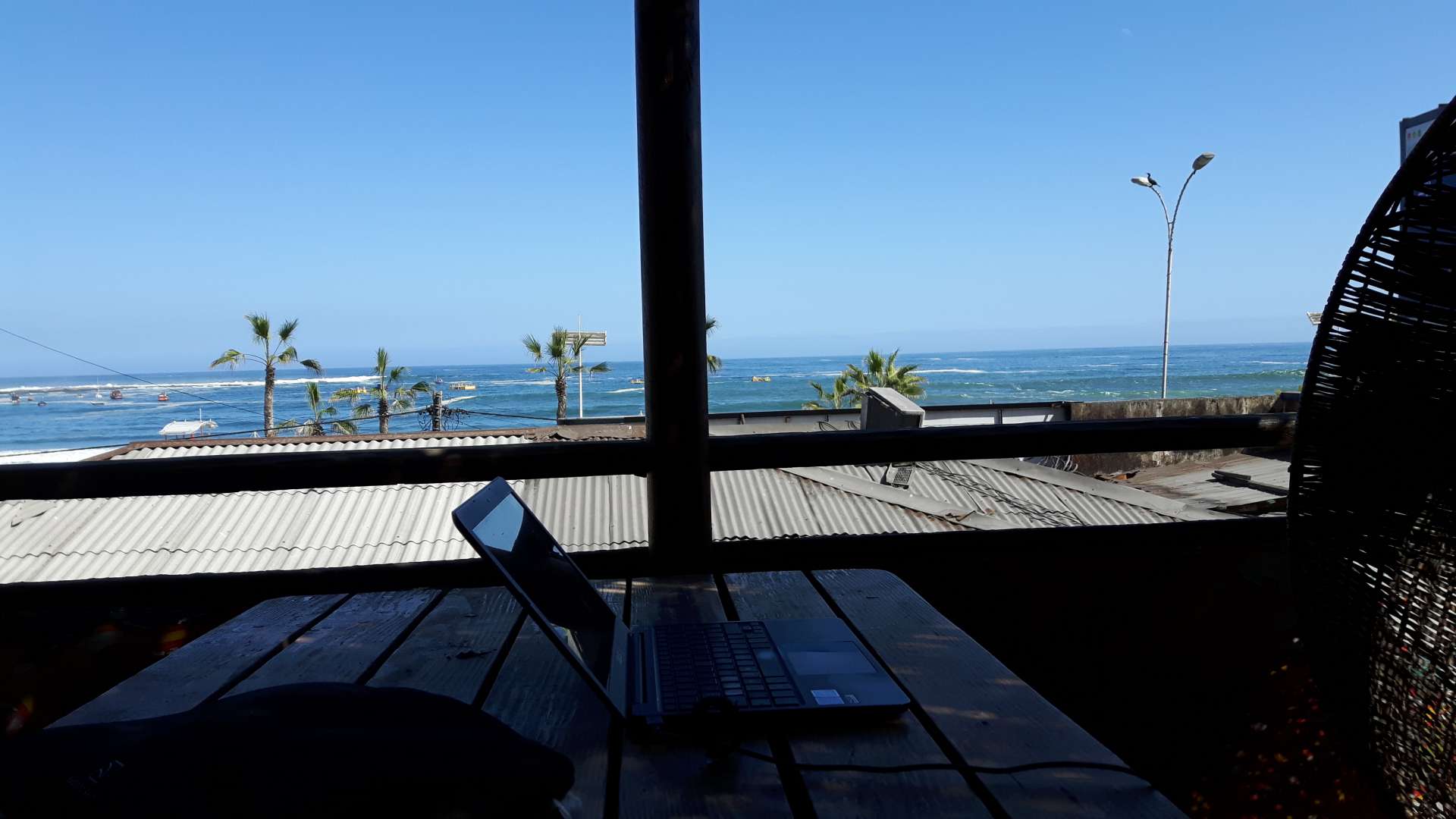
the preferred workplace in our hostel. Today there is a cold wind, so I can sit here with my laptop and write
Подписаться на новостную рассылку
Отвечать (3)
Renate
Hallo Thomas, konnte mich jetzt endlich anmelden. Weiteres in KürzeRenate
Deine Vespa macht ganz schön Probleme. Ich bewundere Dich für Deinen Gleichmut und für Dein Durchhaltevermögen. Thomas
das gute überwiegt!! danke für dein feedback!!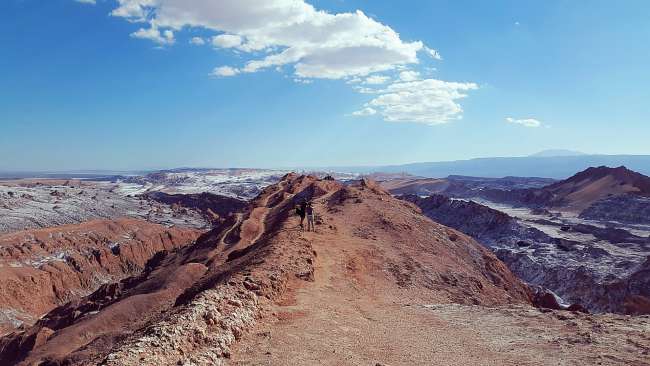
Отчеты о поездках Чили
